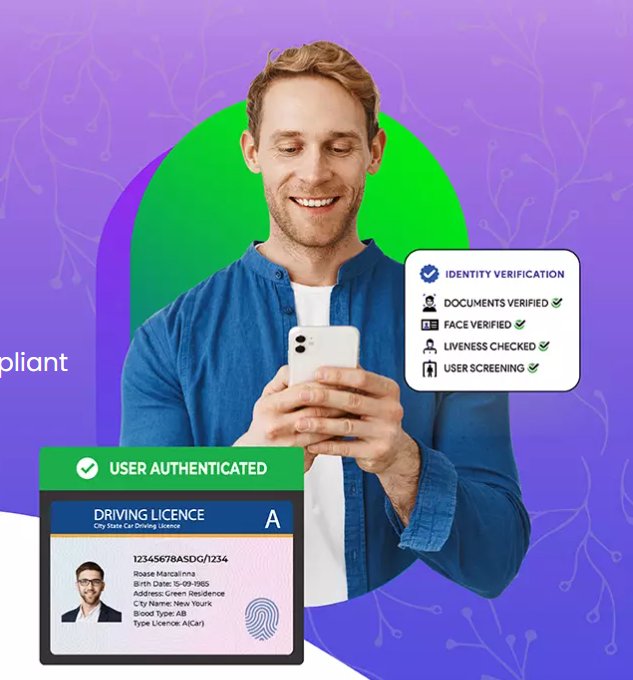Voice Authentication and NFC Verification Services: Elevating Identity Verification to the Next Level
Voice authentication and NFC verification services are redefining digital identity verification.

In today’s fast-paced digital landscape, secure and seamless identity verification is a top priority for businesses and users alike. Traditional authentication methods like passwords and OTPs are no longer enough to safeguard against evolving cyber threats. This is where Voice Authentication and NFC Verification Services are revolutionizing the way organizations authenticate identities — offering a powerful blend of security, convenience, and speed.
What Is Voice Authentication?
Voice authentication, also known as voice biometrics, is a biometric technology that uses an individual’s voice as a unique identifier to verify their identity. Just as fingerprints and iris patterns are unique, each person’s voice has distinct characteristics such as pitch, tone, rhythm, and vocal tract shape.
Unlike passwords or PINs, voice authentication cannot be easily stolen or guessed. It provides a hands-free, frictionless experience that is ideal for mobile apps, call centers, financial services, and any platform where identity verification is required.
How Voice Authentication Works
Voice authentication typically involves two key processes:
-
Enrollment: The user records a specific phrase or sentence. The system analyzes and stores the voiceprint.
-
Verification: During subsequent interactions, the user repeats the same phrase. The system matches it with the stored voiceprint to authenticate the identity.
Advanced algorithms and AI are used to ensure high accuracy even in challenging conditions like background noise or varied speech tempo.
What Is NFC Verification?
NFC (Near Field Communication) verification is another cutting-edge identity verification method that uses contactless communication between devices. With NFC, users can authenticate themselves by simply tapping an NFC-enabled ID document (like a passport or national ID) against a smartphone.
This technology is widely used for document verification in e-KYC, border control, mobile banking, and onboarding processes. It ensures real-time, tamper-proof data extraction from the embedded chip in an ID document.
How NFC Verification Works
-
Document Scan: The front and back of the ID document are scanned using the camera.
-
NFC Chip Reading: The smartphone reads the embedded chip to extract encrypted personal data like full name, date of birth, and photo.
-
Cross-verification: The scanned data and chip data are compared for consistency and validity.
This contactless process is highly secure, fast, and eliminates the risk of fake or tampered documents.
Benefits of Combining Voice Authentication and NFC Verification
When used together, voice authentication and NFC verification form a robust multi-layered security framework. This hybrid approach is gaining popularity in industries like fintech, healthcare, telecom, and government services.
Here are the key benefits:
1. Enhanced Security
Voice biometrics and NFC technology make it extremely difficult for fraudsters to manipulate the system. Both methods use unique, non-replicable identifiers, significantly reducing the risk of identity theft.
2. Faster User Onboarding
The contactless nature of NFC verification, combined with the ease of voice recognition, accelerates onboarding processes. Users no longer have to deal with long forms or multiple verifications.
3. Improved User Experience
Modern consumers demand convenience. Voice and NFC-based verification offers a smooth, intuitive experience that doesn’t require remembering complex passwords or security questions.
4. Compliance with Regulatory Standards
Industries like banking and healthcare are required to meet strict KYC/AML compliance. Voice and NFC verification help businesses meet these regulatory requirements with ease and transparency.
5. Scalability and Integration
These technologies can be easily integrated into mobile apps, websites, and enterprise platforms using secure APIs. They are also scalable, making them ideal for businesses of all sizes.
Real-World Use Cases
-
Banking: Customers verify their identity with voice commands during phone banking or app access.
-
eKYC Platforms: NFC-enabled documents are scanned and verified instantly during customer onboarding.
-
Healthcare: Patients use voice authentication for accessing medical records securely.
-
Travel & Immigration: NFC verification of e-passports speeds up the immigration process.
Conclusion
Voice authentication and NFC verification services are redefining digital identity verification. With advanced biometric capabilities and real-time document validation, businesses can offer customers a secure and seamless experience while ensuring compliance and reducing fraud.
If your organization is looking to enhance its identity verification process, adopting these next-gen solutions is not just an option — it's a necessity. As technology evolves, so should your approach to trust and security.
What's Your Reaction?


















